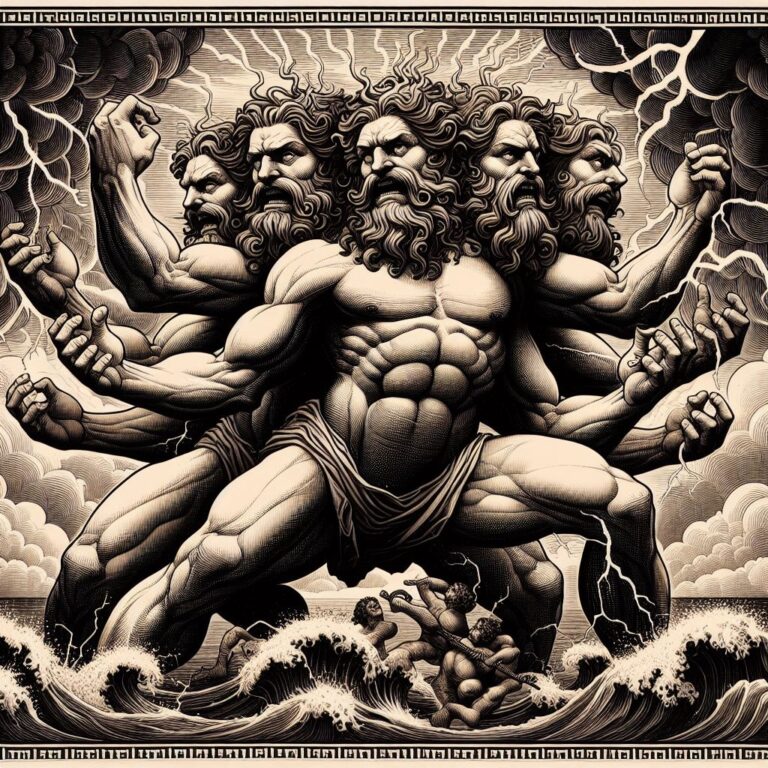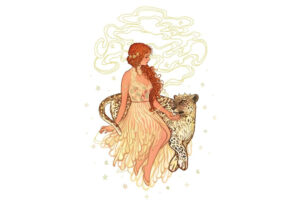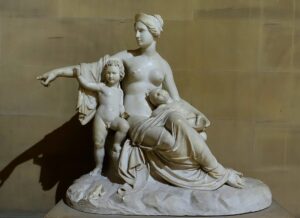Table of Contents
In the rich tapestry of Greek mythology, the Hecatonchires stand out as colossal beings—Briareus, Cottus, and Gyges—born to the primordial deities Uranus and Gaia.
Appearance
These mythical giants were distinguished by their awe-inspiring stature, boasting not only a hundred arms but also fifty heads each. A manifestation of chaos and power, their form conveyed a sense of primal force.
Individuality
Briareus, known for his strength, shared the stage with Cottus, characterized by a more violent demeanor. Gyges, sometimes interchangeable with Gyes, added an element of variability to the trio’s mythological portrayal.
Physical Form
Gigantic in size, the Hecatonchires became symbolic representations of primal, chaotic forces within Greek mythology. The exact details of their physical features could vary in different mythological accounts, contributing to their mystique.
Special Abilities
Their extraordinary strength and enormous size were their defining features, making them formidable adversaries in the Titanomachy. Armed with a multitude of limbs, they could wield an impressive array of weapons simultaneously, adding to their prowess.
Myths
The Hecatonchires played a pivotal role in the Titanomachy, the epic battle between the Olympian gods and the Titans. Their release from Tartarus by Zeus marked a turning point, showcasing their significance in the divine narrative.
Creation Myths
Beyond the Titanomachy, these beings found a place in the annals of creation myths, acknowledged as the offspring of Uranus and Gaia. This underscored their early and vital role in the unfolding of the divine lineage.
Guardians of Tartarus
Post-victory, the Hecatonchires assumed the role of guardians of Tartarus, the deepest abyss in the Underworld. This transition symbolized their continued importance in maintaining order within the divine realms.
The Hecatonchires, with their intricate mythological details, remain enduring symbols of power and chaos, etched into the vast canvas of Greek mythology. Their colossal presence echoes through the ages, a testament to the timeless allure of ancient tales.
Modern culture
Percy Jackson & the Olympians Series (Books and Film):
The Hecatonchires make an appearance in Rick Riordan’s popular young adult book series, “Percy Jackson & the Olympians.” They are also referenced in the film adaptation, “Percy Jackson: Sea of Monsters.”
God of War Video Game Series:
The Hecatonchires are featured in the “God of War” video game series, known for its exploration of Greek mythology. Players encounter these monstrous beings in the game’s epic battles.
Illustrations and Art:
Various artists create illustrations depicting the Hecatonchires in diverse styles. Online platforms, art galleries, and mythology-inspired art books may showcase these visual interpretations.
Dungeons & Dragons (D&D):
In the world of tabletop role-playing games, Dungeons & Dragons draws inspiration from various mythologies. The Hecatonchires, or creatures inspired by them, might appear in D&D campaigns or related sourcebooks.
Marvel Comics:
While not directly named as Hecatonchires, Marvel Comics features characters and creatures inspired by Greek mythology. Certain beings, with multiple arms or monstrous attributes, may evoke the spirit of the Hecatonchires.
Fantasy Literature:
Some fantasy novels and series incorporate elements from Greek mythology, and the Hecatonchires may be referenced or adapted in unique ways. Examples include works by authors exploring mythological themes.
FAQ
Who were the Hecatonchires in Greek mythology?
The Hecatonchires were three gigantic beings—Briareus, Cottus, and Gyges—born to Uranus and Gaia. They played a crucial role in the Titanomachy.
What was the Titanomachy, and how were the Hecatonchires involved?
The Titanomachy was a war between the Titans and the Olympian gods. The Hecatonchires aided the Olympians, and their release from Tartarus by Zeus was pivotal in the conflict.
Where were the Hecatonchires imprisoned before their release by Zeus?
The Hecatonchires were imprisoned in Tartarus, the deepest part of the Underworld, by Uranus due to their unruly and formidable nature.
What is the significance of the Hecatonchires in Greek mythology?
The Hecatonchires symbolize primal, chaotic forces in Greek mythology. Their role in the Titanomachy underscores their importance in the cosmic order and the triumph of the Olympians.
Do the Hecatonchires have specific powers or abilities?
The Hecatonchires were known for their enormous size and strength. With a hundred arms, they could wield a vast array of weapons simultaneously, making them formidable in battle.
Pronunciation of "Hecatonchires"
- Pronunciation: hek-uh-TONG-kai-rees
- Breakdown: hek-uh-TONG-kai-rees
- Note: The emphasis is often placed on the second syllable, "TONG."




